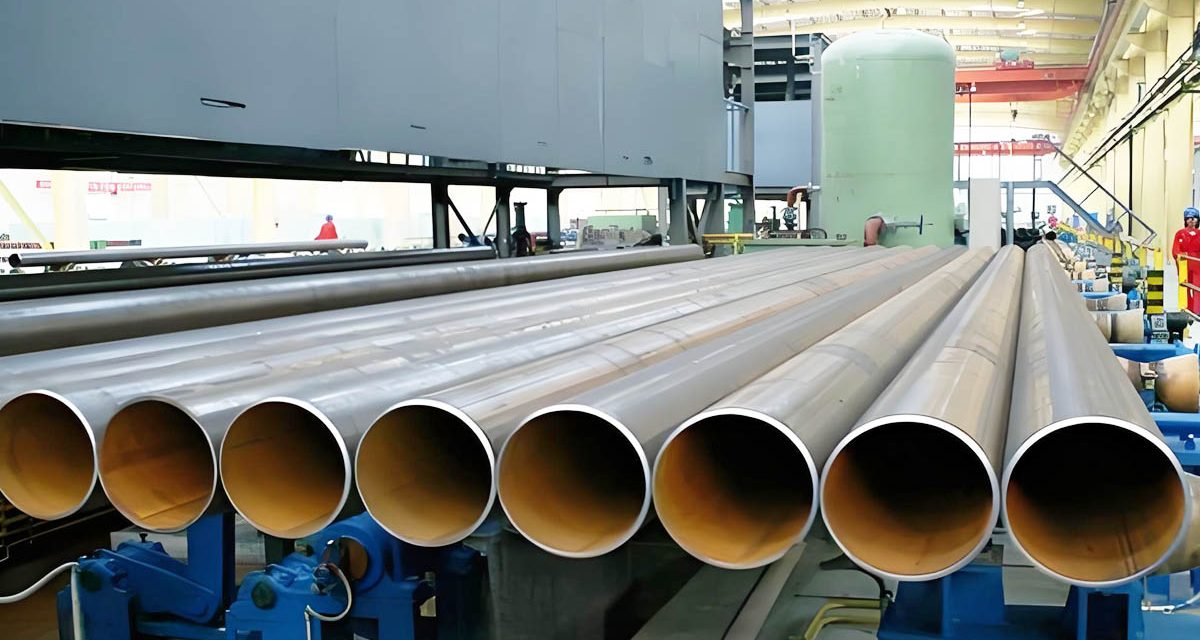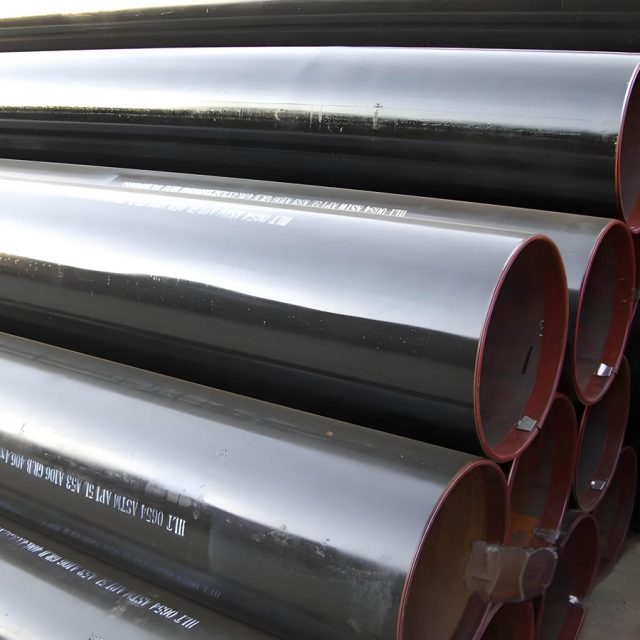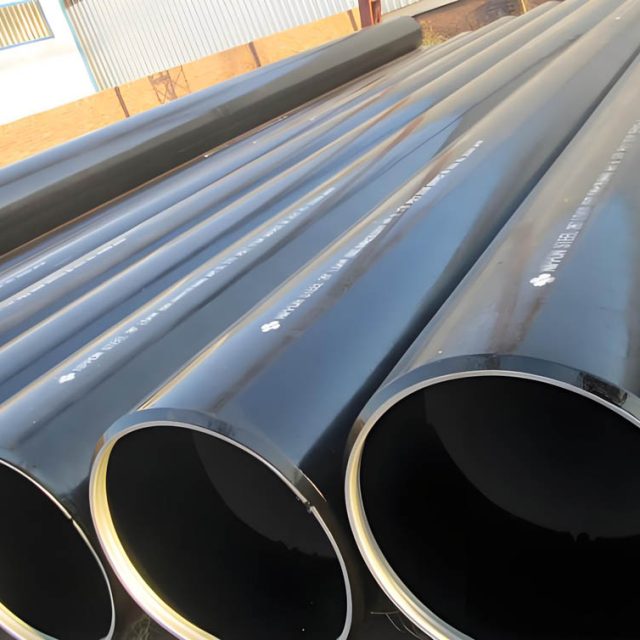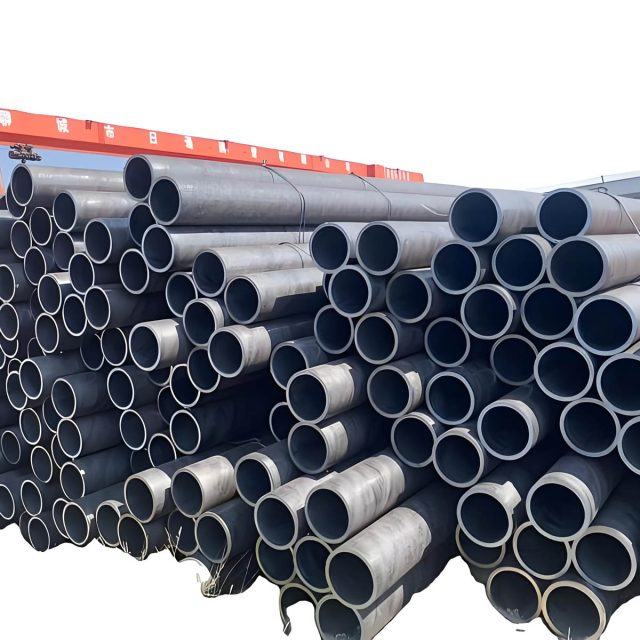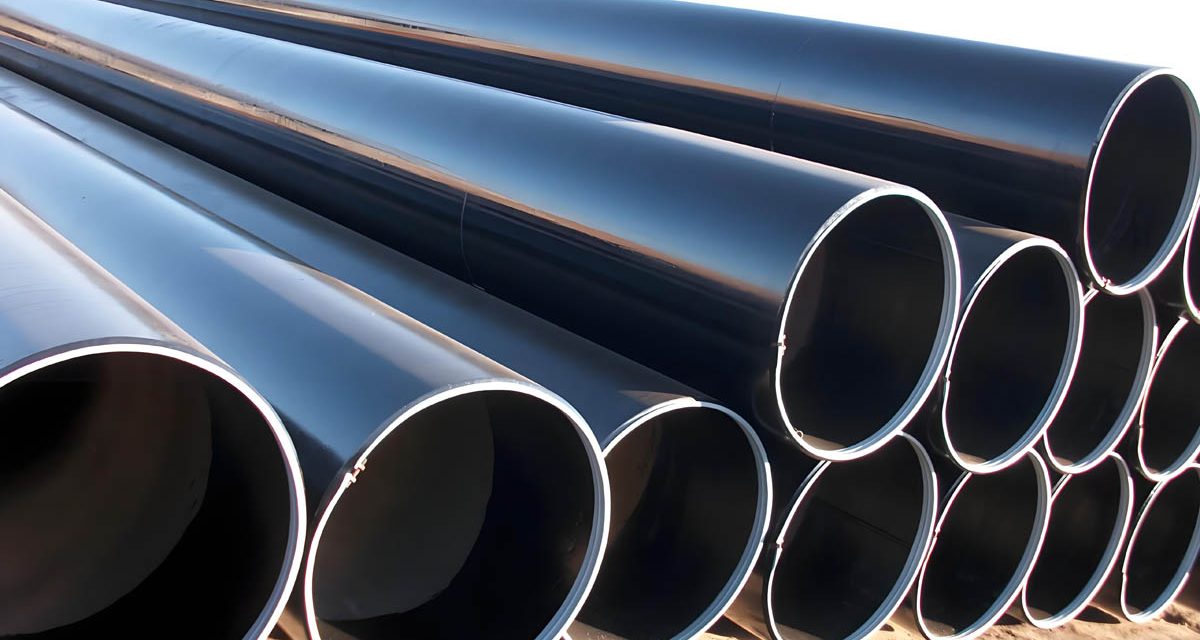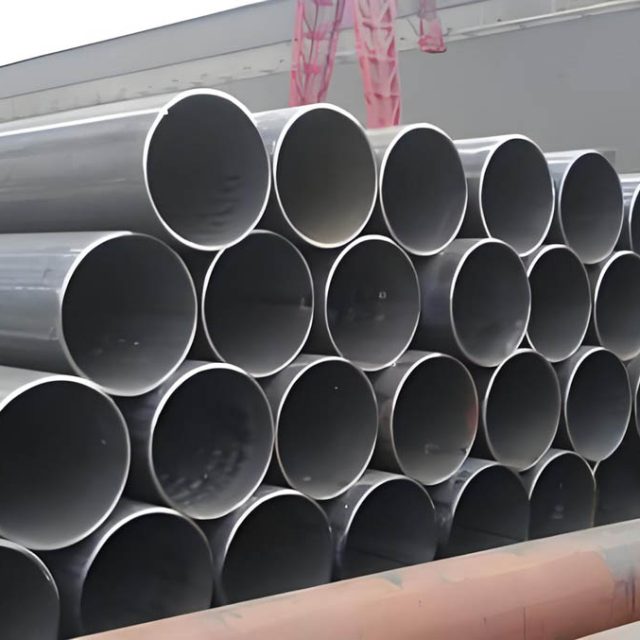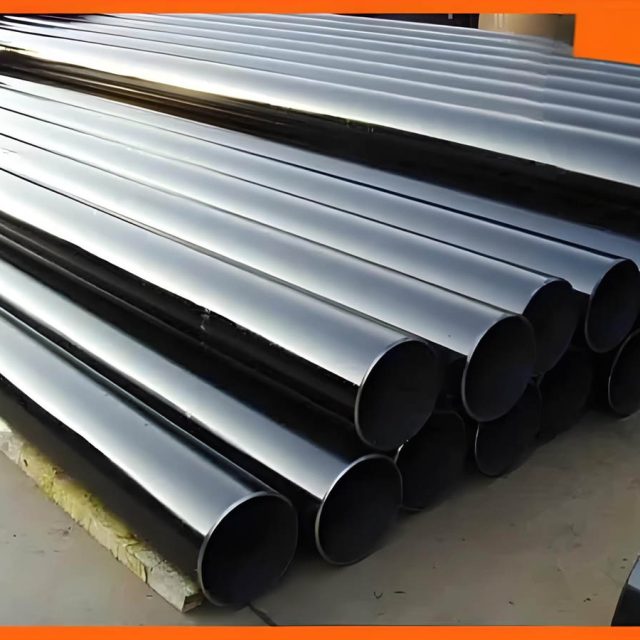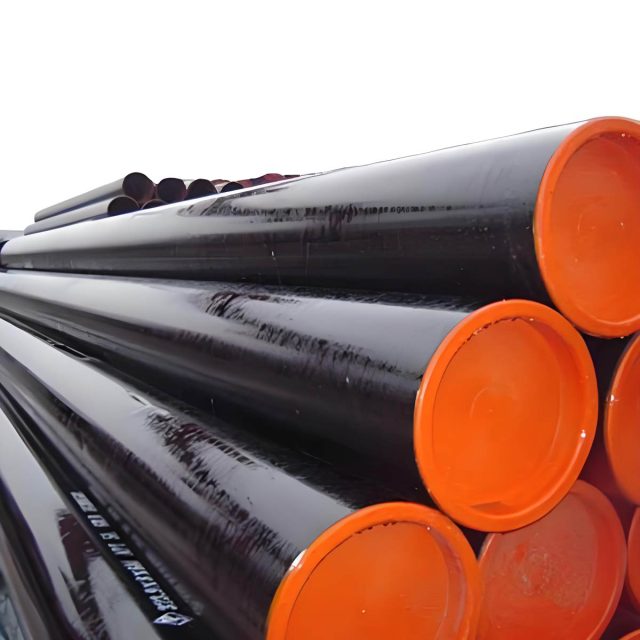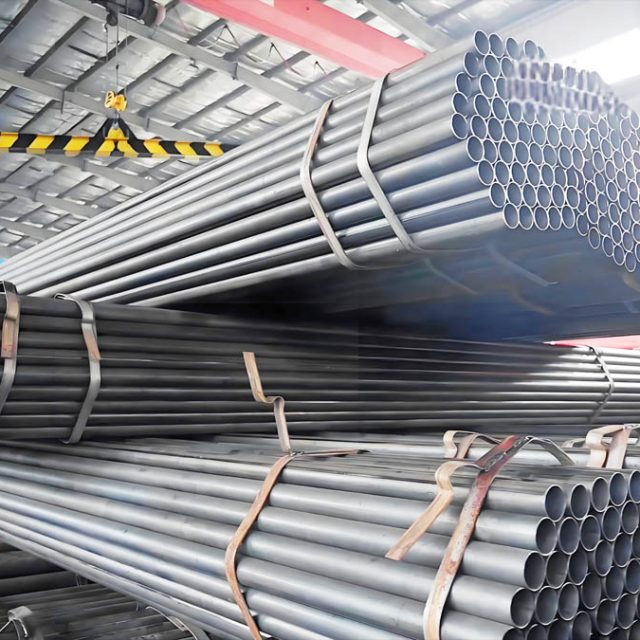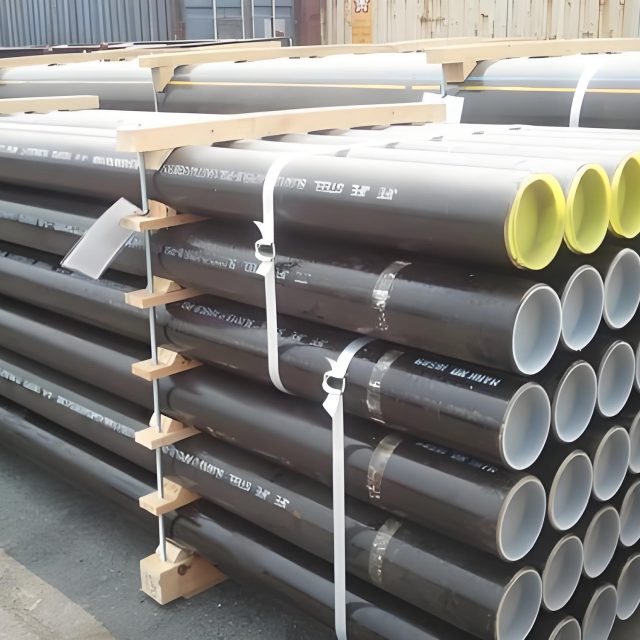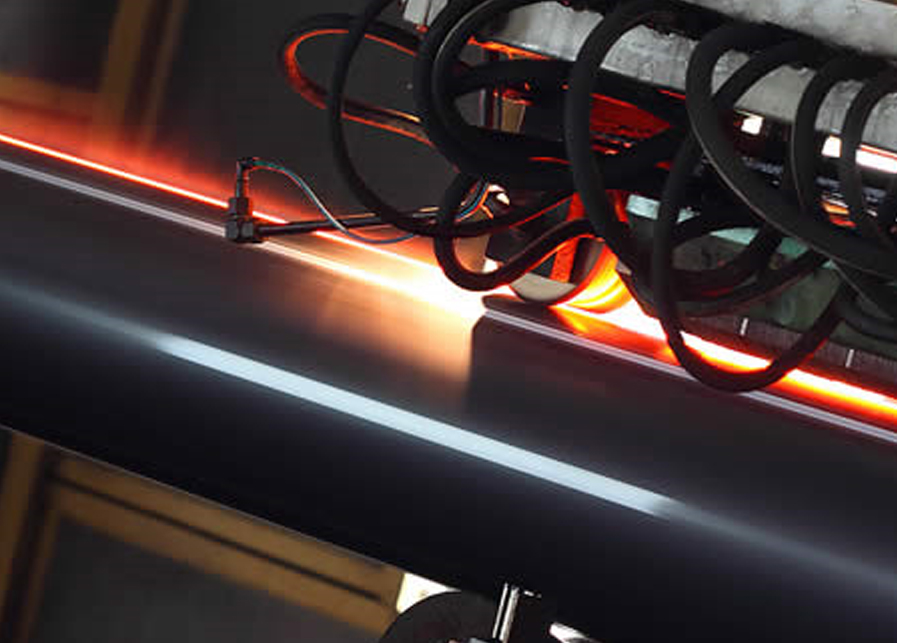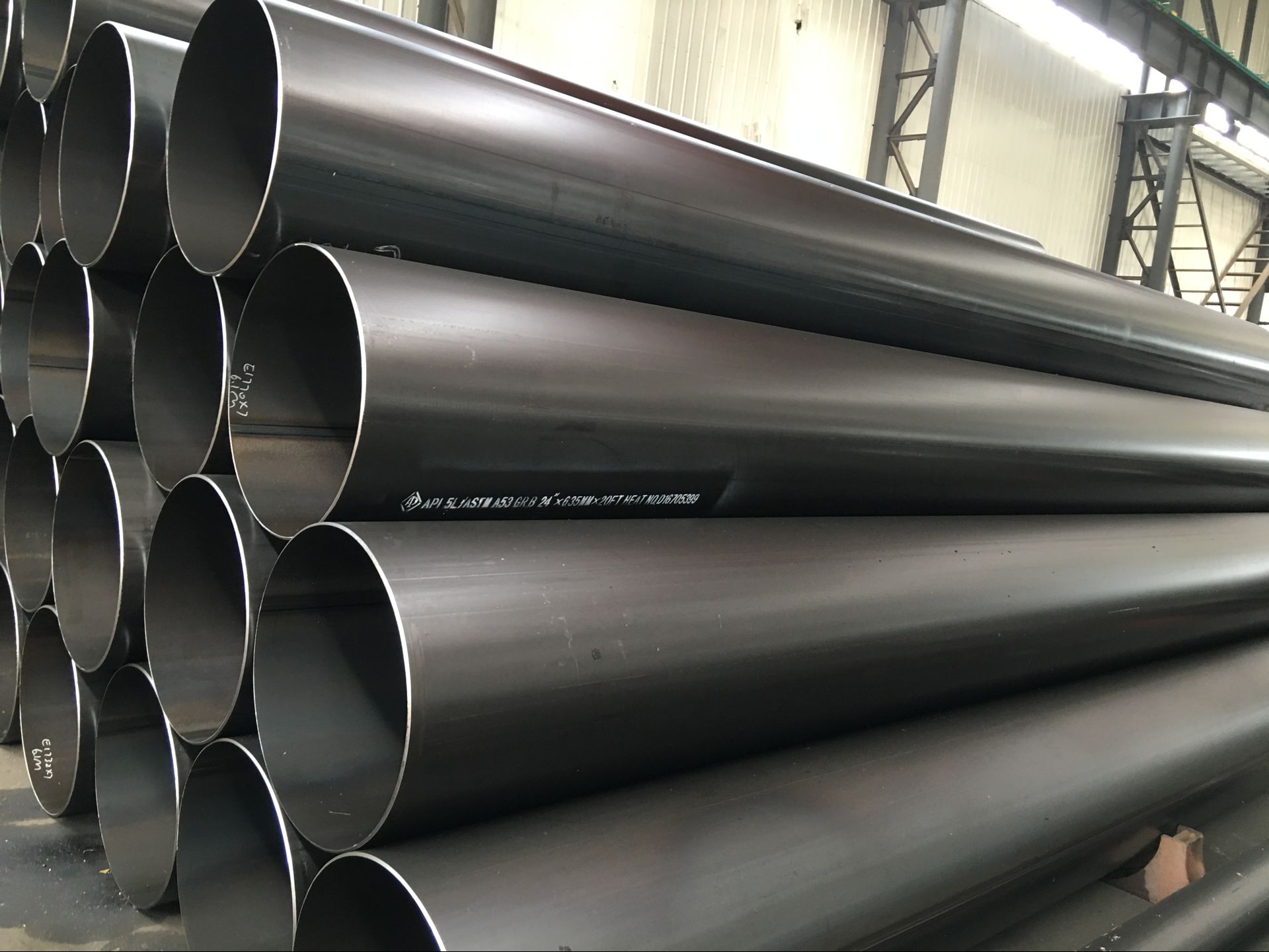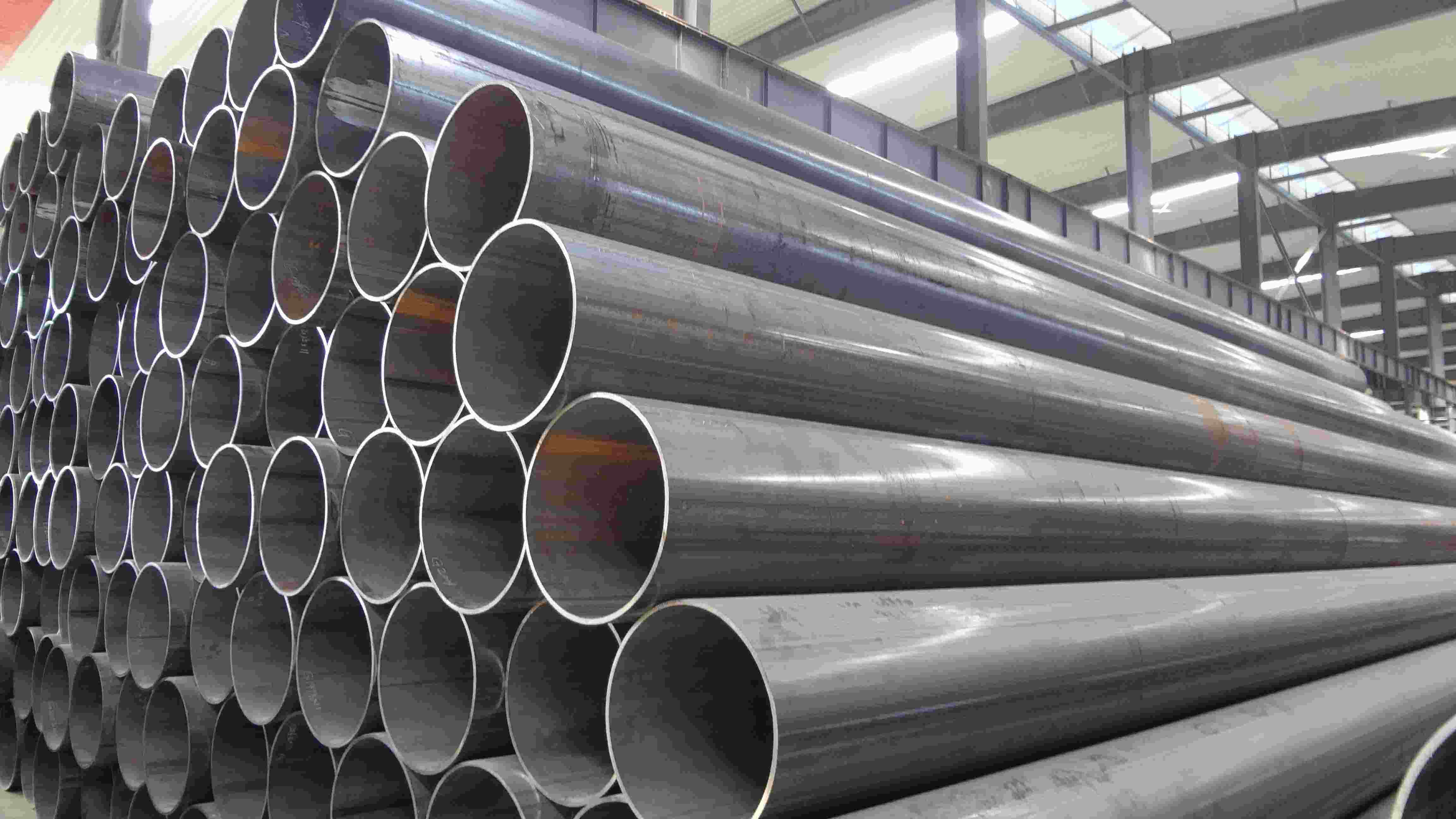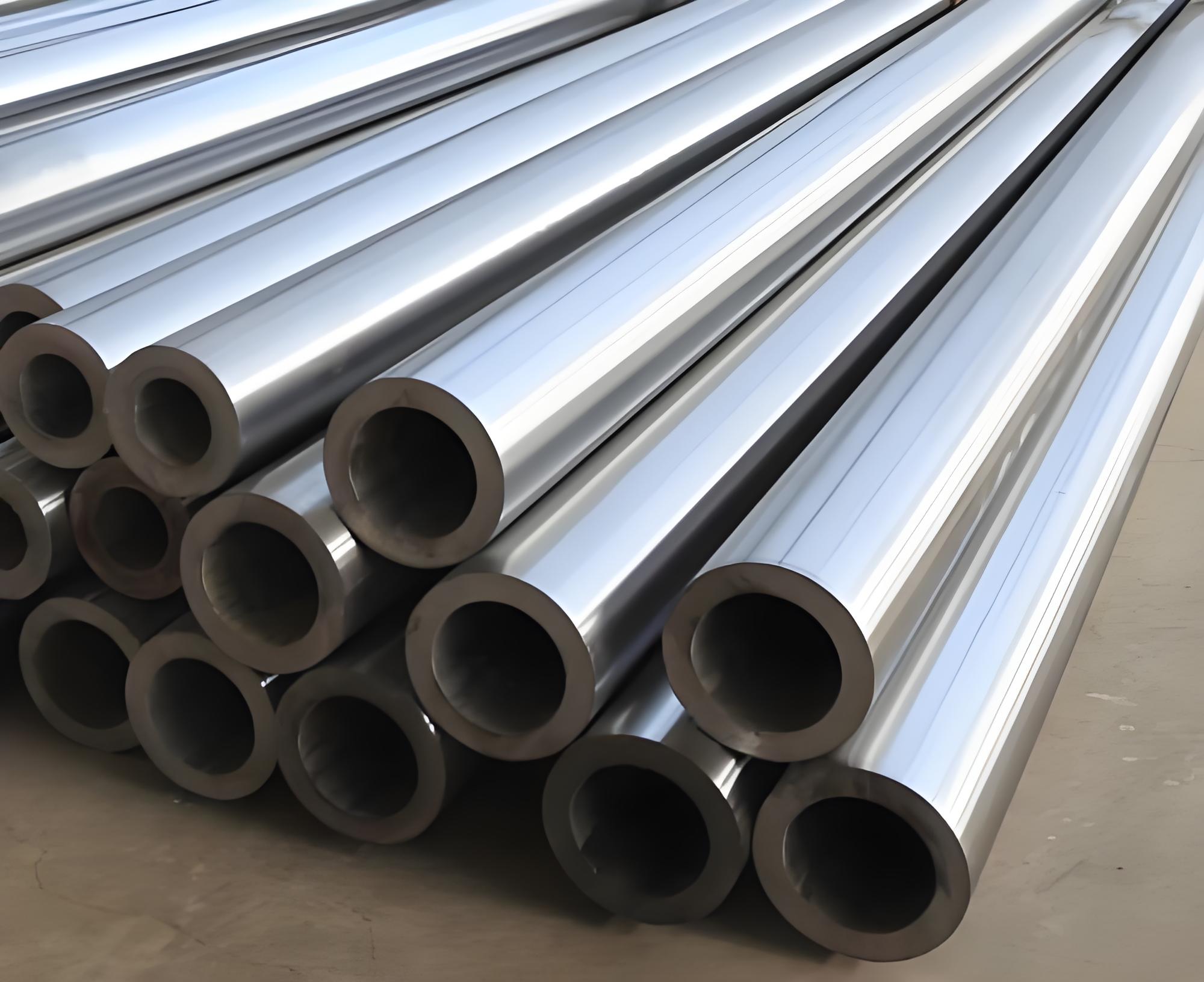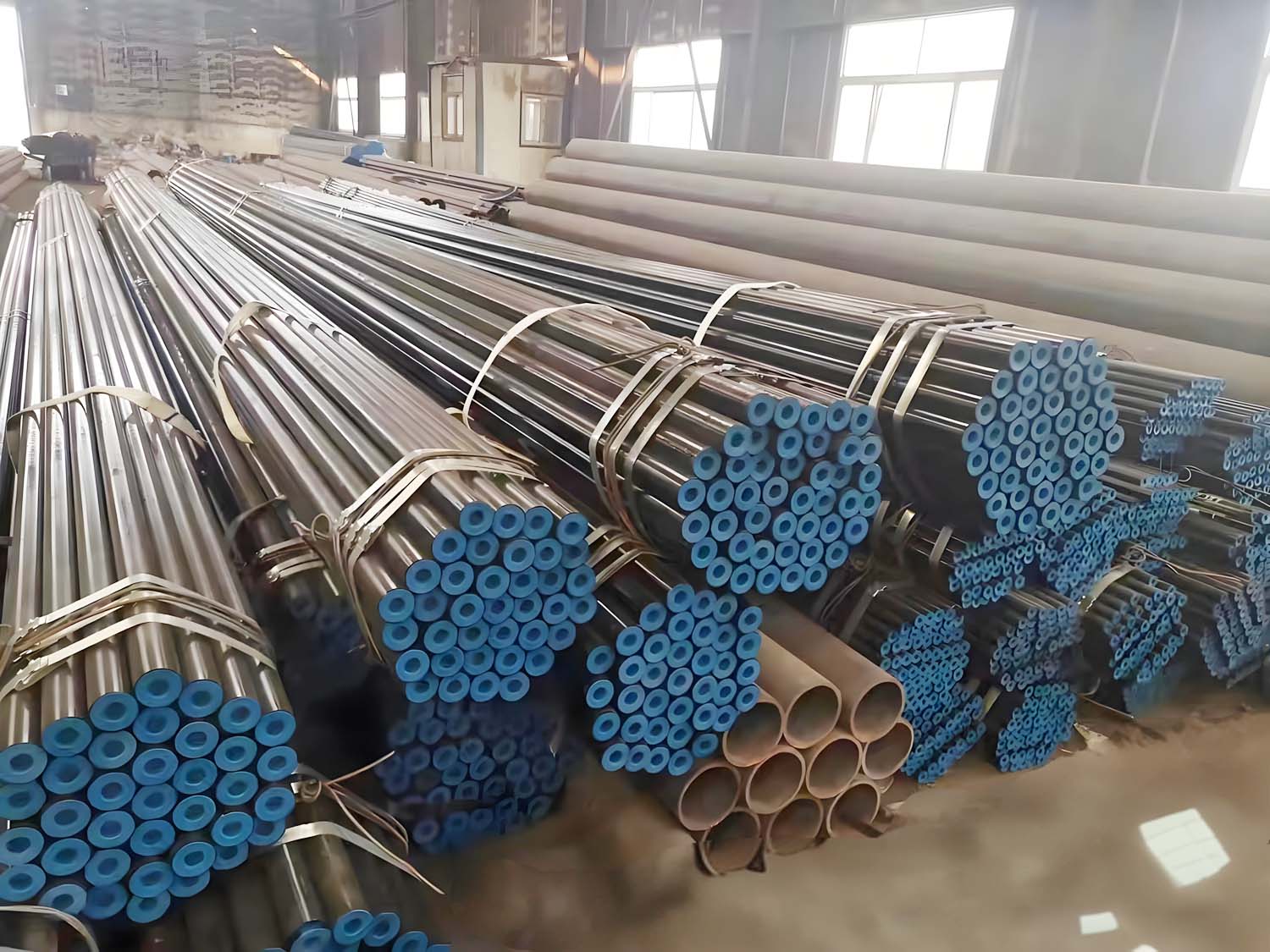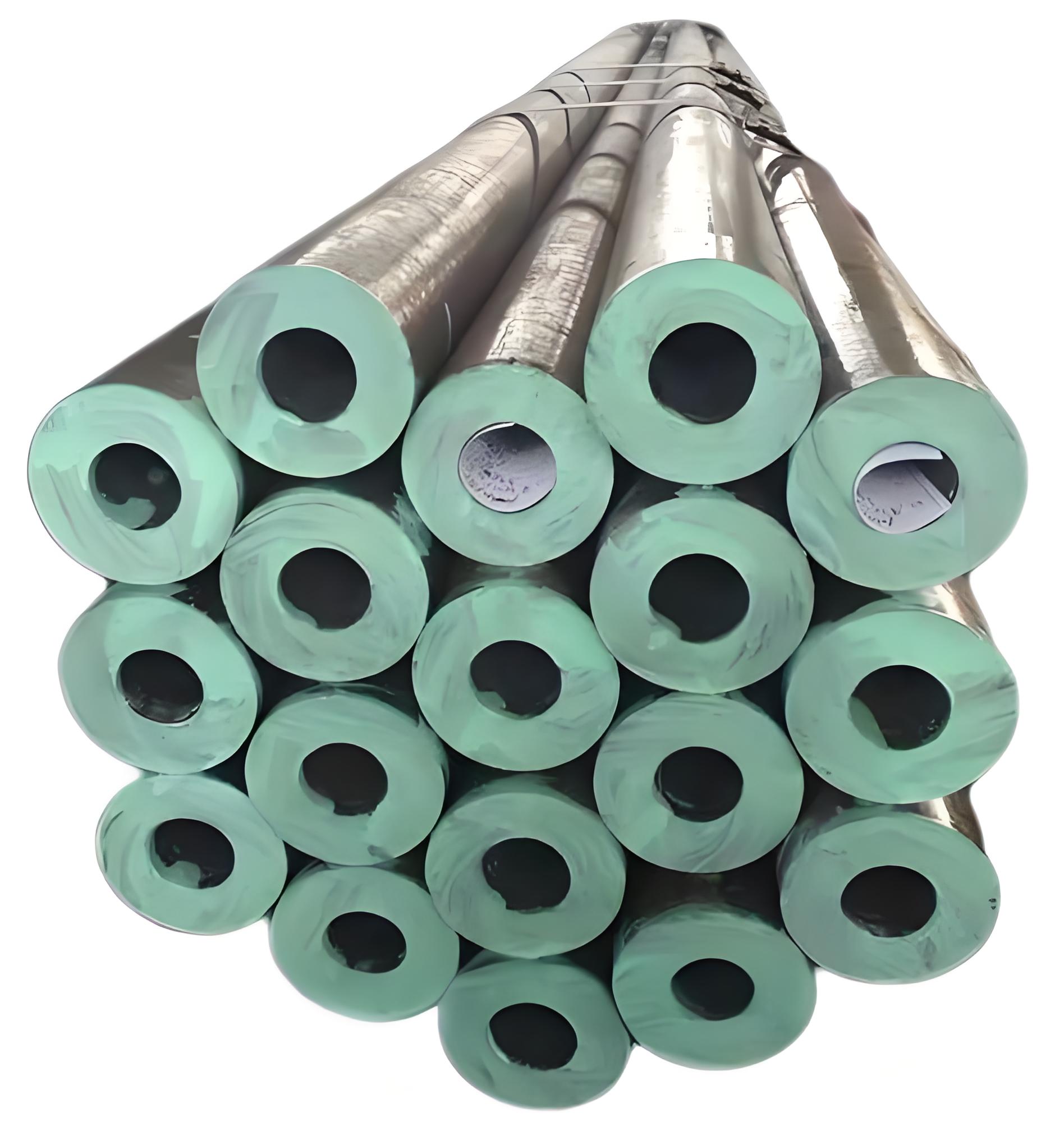Tubería de acero ERW
Tubería de acero ERW
REG (Soldado por resistencia eléctrica) tubos de acero son un tipo de tubería de acero que se fabrican a través de un proceso de soldadura que emplea resistencia eléctrica. Las tuberías ERW se utilizan en varias aplicaciones debido a su alta calidad, durabilidad, y rentabilidad. Aquí hay una descripción general de las tuberías de acero ERW, su proceso de fabricación, aplicaciones, y beneficios.
Proceso de fabricación
- Materia prima:
- El proceso de fabricación comienza con bobinas de acero, que se cortan en tiras de ancho apropiado.
- formando:
- Las tiras de acero se pasan a través de una serie de rodillos para formarlas en forma cilíndrica.
- Soldadura:
- Los bordes de la tira de acero cilíndrica se calientan y se presionan mediante soldadura de resistencia eléctrica, Formando una costura continua. A diferencia de otros métodos de soldadura, No se usa material de relleno.
- Refinamiento:
- La costura soldada se recoce (tratado con calor) Para eliminar cualquier tensión residual del proceso de soldadura.
- Luego se corta la tubería a la longitud deseada, y más procesos de acabado como enderezar, con orientación final, y el recubrimiento se puede aplicar.
- Control de calidad:
- Las tuberías de ERW se someten a varias pruebas de control de calidad, incluyendo pruebas ultrasónicas, prueba hidrostática, e inspección visual para garantizar que cumplan con los estándares y especificaciones de la industria.
Diámetro exterior
- Rango: 1/2″ a 28″
Espesor de la pared
- Rango: 1.65 mm a 20 milímetros (Todos los horarios)
Longitud
- Rango: 1 metro a 12 m o según los requisitos del cliente
Estándares
- ASTM 5L
- ASTM A53
- ASTM A178
- ASTM A500/501
- ASTM A691
- ASTM A252
- ASTM A672
- EN 10217
Grados de materiales
- API 5L: PSL1/PSL2 Gr.A, Gr.B, X42, X46, X52, X56, X60, X65, X70
- ASTM A53: GR.A, GR.B
- EN: S275, S275JR, S355JRH, S355J2H
Extremos de tubería
- Extremo liso
- Extremo biselado
- roscado
Opciones de tratamiento de superficies
- Desnudo
- Pintado de negro
- barnizado
- Galvanizado
- Recubrimientos anticorrosión (3educación física, PP/PE, Recubrimiento FBE, etc.)
Proceso de fabricación
- Estirado en frío
- Laminado en Caliente
Pruebas y garantía de calidad
- Análisis de componentes químicos
- Propiedades mecánicas:
- Resistencia máxima a la tracción
- Fuerza de producción
- Alargamiento
- Propiedades técnicas:
- Prueba de aplanamiento
- Prueba de flexión
- Prueba de dureza
- Prueba de impacto
- Inspección del tamaño exterior
- Prueba hidrostática
- Pruebas no destructivas (END):
- hora del este (Prueba de corrientes de Foucault)
- RT (Prueba radiográfica)
- Utah (Prueba ultrasónica)
Especificación
Especificación:
|
PULGADA
|
DE
(MM)
|
Espesor de la pared huele
|
|||||||
|
Sch 10WT
(milímetros)
|
Sch 20WT
(milímetros)
|
Sch 40WT
(mm)
|
Sch 60WT
(milímetros)
|
Sch80wt (Mm) |
Sch 100WT (milímetros) |
Sch 160WT (Mm) |
XXS (milímetros) |
||
|
1/4"
|
13.7
|
|
|
2.24
|
|
3.02
|
|
|
|
|
3/8"
|
17.1
|
|
|
2.31
|
|
3.2
|
|
|
|
|
1/2"
|
21.3
|
2.11
|
|
2.77
|
|
3.73
|
|
4.78
|
7.47
|
|
3/4″
|
26.7
|
2.11
|
|
2.87
|
|
3.91
|
|
5.56
|
7.82
|
|
1″
|
33.4
|
2.77
|
|
3.38
|
|
4.55
|
|
6.35
|
9.09
|
|
1-1/4″
|
42.2
|
2.77
|
|
3.56
|
|
4.85
|
|
6.35
|
9.7
|
|
1-1/2″
|
48.3
|
2.77
|
|
3.68
|
|
5.08
|
|
7.14
|
10.15
|
|
2″
|
60.3
|
2.77
|
|
3.91
|
|
5.54
|
|
8.74
|
11.07
|
|
2-1/2″
|
73
|
3.05
|
|
5.16
|
|
7.01
|
|
9.53
|
14.02
|
|
3″
|
88.9
|
3.05
|
|
5.49
|
|
7.62
|
|
11.13
|
15.24
|
|
3-1/2″
|
101.6
|
3.05
|
|
5.74
|
|
8.08
|
|
|
|
|
4″
|
114.3
|
3.05
|
4.5
|
6.02
|
|
8.56
|
|
13.49
|
17.12
|
|
5″
|
141.3
|
3.4
|
|
6.55
|
|
9.53
|
|
15.88
|
19.05
|
|
6″
|
168.3
|
3.4
|
|
7.11
|
|
10.97
|
|
18.26
|
21.95
|
|
8″
|
219.1
|
3.76
|
6.35
|
8.18
|
10.31
|
12.7
|
15.09
|
23.01
|
22.23
|
|
10″
|
273
|
4.19
|
6.35
|
9.27
|
12.7
|
15.09
|
18.26
|
28.58
|
25.4
|
|
12″
|
323.8
|
4.57
|
6.35
|
10.31
|
14.27
|
17.48
|
21.44
|
33.32
|
25.4
|
|
14″
|
355
|
6.35
|
7.92
|
11.13
|
15.09
|
19.05
|
23.83
|
36.71
|
|
|
16″
|
406
|
6.35
|
7.92
|
12.7
|
16.66
|
21.44
|
26.19
|
40.49
|
|
|
18″
|
457
|
6.35
|
7.92
|
14.27
|
19.05
|
23.83
|
29.36
|
46.24
|
|
|
20″
|
508
|
6.35
|
9.53
|
15.09
|
20.62
|
26.19
|
32.54
|
50.01
|
|
|
22″
|
559
|
6.35
|
9.53
|
|
22.23
|
28.58
|
34.93
|
54.98
|
|
|
24″
|
610
|
6.35
|
9.53
|
17.48
|
24.61
|
30.96
|
38.89
|
59.54
|
|
|
26″
|
660
|
7.92
|
12.7
|
|
|
|
|
|
|
|
28″
|
711
|
7.92
|
12.7
|
|
|
|
|
|
|
|
30″
|
762
|
7.92
|
12.7
|
|
|
|
|
|
|
|
32″
|
813
|
7.92
|
12.7
|
17.48
|
|
|
|
|
|
|
34″
|
863
|
7.92
|
12.7
|
17.48
|
|
|
|
|
|
|
36″
|
914
|
7.92
|
12.7
|
19.05
|
|
|
|
|
|
|
38″
|
965
|
|
|
|
|
|
|
|
|
|
40″
|
1016
|
|
|
|
|
|
|
|
|
|
42″
|
1066
|
|
|
|
|
|
|
|
|
|
44″
|
1117
|
|
|
|
|
|
|
|
|
|
46″
|
1168
|
|
|
|
|
|
|
|
|
|
48″
|
1219
|
|
|
|
|
|
|
|
|
Estándar
Análisis químico y propiedades mecánicas.
| Estándar | Clase | Calificación | Análisis químico(%) | Propiedades mecánicas(mín.)(MPa) | ||||
| c | Minnesota | PAG | S | Resistencia a la tracción | Fuerza de producción | |||
| API 5L | PSL1 | B | 0.26 | 1.20 | 0.030 | 0.030 | 414 | 241 |
| X42 | 0.26 | 1.30 | 0.030 | 0.030 | 414 | 290 | ||
| X46 | 0.26 | 1.40 | 0.030 | 0.030 | 434 | 317 | ||
| X52 | 0.26 | 1.40 | 0.030 | 0.030 | 455 | 359 | ||
| X56 | 0.26 | 1.40 | 0.030 | 0.030 | 490 | 386 | ||
| X60 | 0.26 | 1.40 | 0.030 | 0.030 | 517 | 414 | ||
| X65 | 0.26 | 1.45 | 0.030 | 0.030 | 531 | 448 | ||
| X70 | 0.26 | 1.65 | 0.030 | 0.030 | 565 | 483 | ||
| PSL2 | B | 0.22 | 1.20 | 0.025 | 0.015 | 414 | 241 | |
| X42 | 0.22 | 1.30 | 0.025 | 0.015 | 414 | 290 | ||
| X46 | 0.22 | 1.40 | 0.025 | 0.015 | 434 | 317 | ||
| X52 | 0.22 | 1.40 | 0.025 | 0.015 | 455 | 359 | ||
| X56 | 0.22 | 1.40 | 0.025 | 0.015 | 490 | 386 | ||
| X60 | 0.22 | 1.40 | 0.025 | 0.015 | 517 | 414 | ||
| X65 | 0.22 | 1.45 | 0.025 | 0.015 | 531 | 448 | ||
| X70 | 0.22 | 1.65 | 0.025 | 0.015 | 565 | 483 | ||
| X80 | 0.22 | 1.85 | 0.025 | 0.015 | 621 | 552 | ||
Proceso
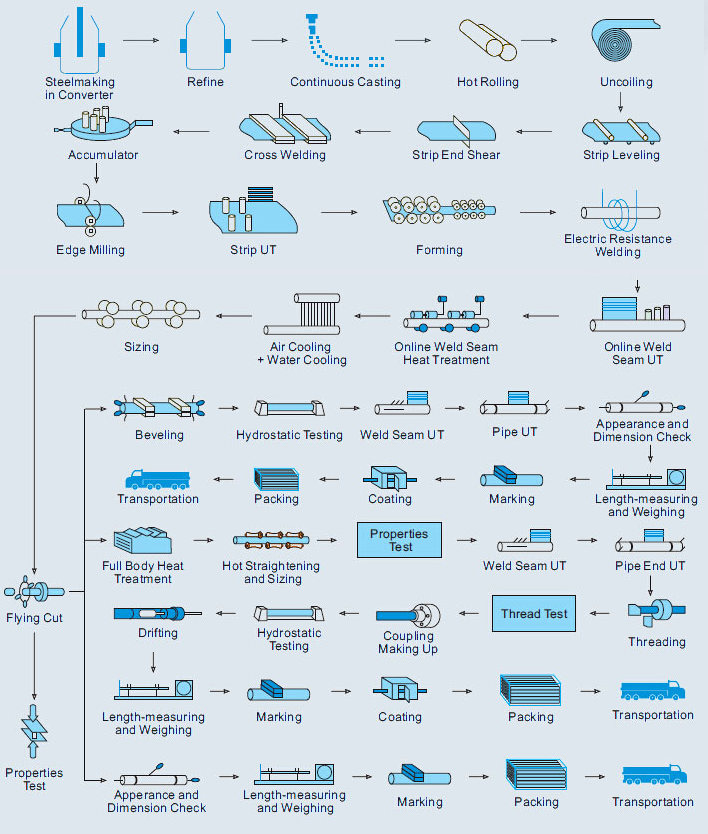
Aplicaciones
Las tuberías de acero ERW se utilizan en una amplia gama de aplicaciones debido a su versatilidad y rentabilidad:
- Industria del petróleo y el gas: Transporte de petróleo, gas, y otros fluidos.
- Sistemas de suministro de agua: Tuberías para sistemas de agua y aguas de agua potable.
- Industria automotriz: Componentes estructurales, sistemas de escape, y otras piezas automotrices.
- Construcción: Aplicaciones estructurales en edificios, puentes, y otros proyectos de infraestructura.
- Ingeniería Mecánica y General: Fabricación de piezas mecánicas y componentes generales de ingeniería.
Beneficios
- Rentable: Las tuberías ERW son generalmente menos costosas que las tuberías sin costuras.
- Alta calidad: El proceso de fabricación garantiza un alto grado de precisión dimensional y uniformidad.
- Resistencia y durabilidad: Las tuberías ERW tienen buenas propiedades mecánicas y son adecuadas para aplicaciones de alta presión.
- Versatilidad: Disponible en varios tamaños, espesores, y longitudes, Hacerlos adecuados para diversas aplicaciones.
- Eficiencia: El proceso ERW es eficiente, Permitir la producción en masa con una calidad consistente.
Tipos de tuberías ERW
- Round Erw Pipes: Comúnmente utilizado en el transporte de fluidos.
- Tuberías ERW cuadradas y rectangulares: A menudo utilizado en aplicaciones estructurales.
- Tuberías ERW galvanizadas: Recubierto con zinc para evitar la corrosión, utilizado en entornos al aire libre y duros.
Estándares y especificaciones
Las tuberías de acero ERW se fabrican para cumplir con varios estándares y especificaciones internacionales, incluido:
- API 5L: Especificación para tuberías de línea.
- ASTM A53: Especificación estándar para tubería, acero, negro y bañado en caliente, recubierto de zinc, soldado y sin costura.
- ASTM A252: Especificación estándar para pilas de tuberías de acero soldadas y sin costuras.
- licenciatura 1387: Especificación para tubos y tubulares de acero atornillados y encajados y para tubos de acero con extremo liso aptos para soldar o atornillar según BS 21 roscas de tubería.
Conclusión
Las tuberías de acero ERW son un componente esencial en diversas industrias debido a su confiabilidad, rentabilidad, y versatilidad. Su proceso de fabricación garantiza un producto de alta calidad que cumpla con los estrictos estándares de la industria, haciéndolos una opción preferida para muchas aplicaciones.

